

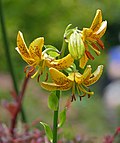
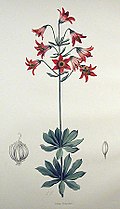




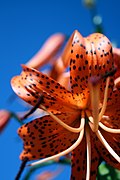

Ecology
Lilies are used as food plants by the larvae of some Lepidoptera species including the Dun-bar.
Toxicity
Some Lilium species are toxic to cats. This is known to be so especially for L. longiflorum though other Lilium and the unrelated Hemerocallis can also cause the same symptoms. The true mechanism of toxicity is undetermined, but it involves damage to the renal tubular epithelium (composing the substance of the kidney and secreting, collecting, and conducting urine),which can cause acute renal failure.
Cultivation
Lilies on display at Hampton Court Flower Show, UK
Many species are widely grown in the garden in temperate and sub-tropical regions. They may also be grown as potted plants. Numerous ornamental hybrids have been developed. They can be used in herbaceous borders, woodland and shrub plantings, and as patio plants. Some lilies, especially Lilium longiflorum, form important cut flower crops. These may be forced for particular markets; for instance, L. longiflorum for the Easter trade, when it may be called the Easter lily.
Lilies are usually planted as bulbs in the dormant season. They are best planted in a south-facing, slightly sloping aspect, in sun or part shade, at a depth 2½ times the height of the bulb (except L. candidum which should be planted at the surface). Lilies have contractile roots which pull the plant down to the correct depth, therefore it is better to plant them too shallowly than too deep. A soil pH of around 6.5 is generally safe. The soil should be well-drained, and plants must be kept watered during the growing season. Some plants have strong wiry stems, but those with heavy flower heads may need staking.


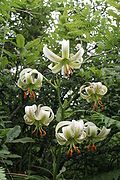

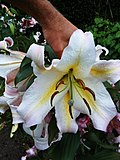

No comments:
Post a Comment